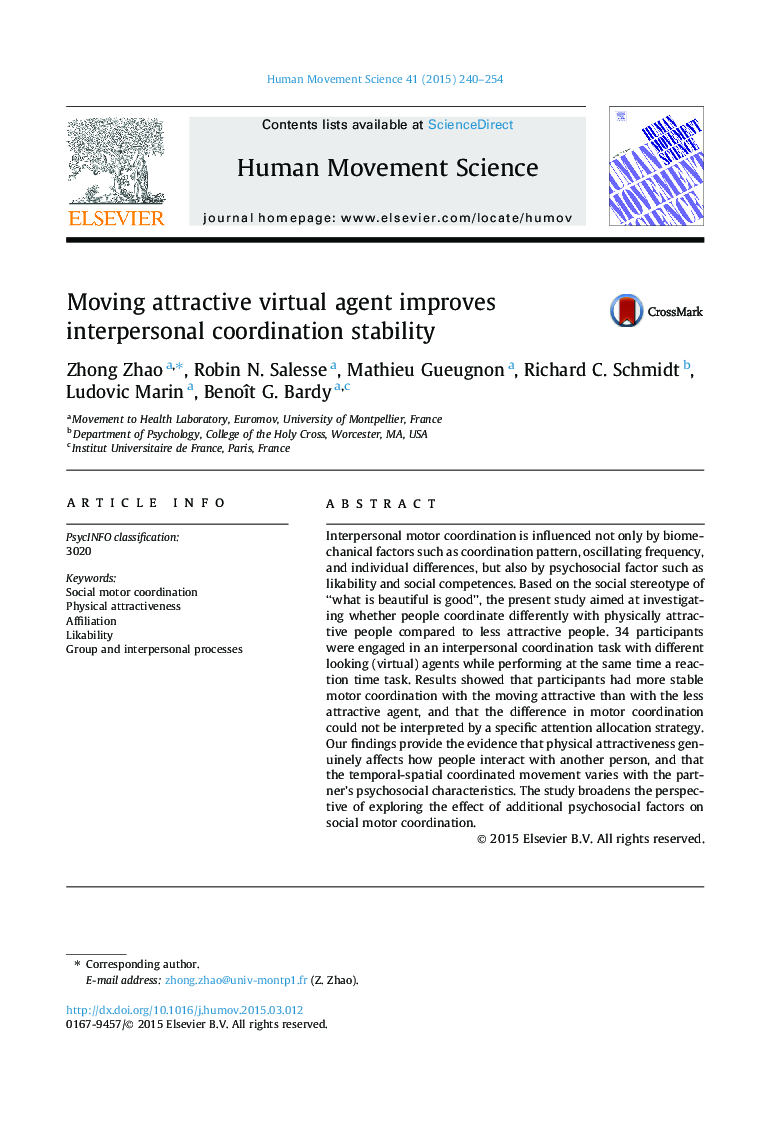| Article ID | Journal | Published Year | Pages | File Type |
|---|---|---|---|---|
| 7292023 | Human Movement Science | 2015 | 15 Pages |
Abstract
Interpersonal motor coordination is influenced not only by biomechanical factors such as coordination pattern, oscillating frequency, and individual differences, but also by psychosocial factor such as likability and social competences. Based on the social stereotype of “what is beautiful is good”, the present study aimed at investigating whether people coordinate differently with physically attractive people compared to less attractive people. 34 participants were engaged in an interpersonal coordination task with different looking (virtual) agents while performing at the same time a reaction time task. Results showed that participants had more stable motor coordination with the moving attractive than with the less attractive agent, and that the difference in motor coordination could not be interpreted by a specific attention allocation strategy. Our findings provide the evidence that physical attractiveness genuinely affects how people interact with another person, and that the temporal-spatial coordinated movement varies with the partner's psychosocial characteristics. The study broadens the perspective of exploring the effect of additional psychosocial factors on social motor coordination.
Related Topics
Life Sciences
Neuroscience
Cognitive Neuroscience
Authors
Zhong Zhao, Robin N. Salesse, Mathieu Gueugnon, Richard C. Schmidt, Ludovic Marin, Benoît G. Bardy,
